New "heart" for CERN's CMS experiment
CERN’s CMS experiment – one of the detectors at the Large Hadron Collider received a new heart today – a pixel detector much like a high-speed digital camera that snaps images up to 40 million times per second.
Earlier today, physicists and engineers at CERN replaced the heart of the Compact Muon Solenoid (external page CMS) experiment, one of the two general purpose particle physics detectors that discovered the Higgs boson in 2012. The discovery completed a missing link in the Standard Model of particle physics anticipated by several theoretical physicists in the 1960s. Built at the external page Large Hadron Collider (LHC) - the world’s largest and most powerful high-energy particle accelerator - the CMS experiment is one of four main detectors. It records particle collisions provided by the 27km LHC, 100 metres underground just outside of Geneva, Switzerland.
ETH Zurich contributions to CMS
Nearly a decade of research lies behind today’s upgrade of the CMS pixel detector, in which ETH Zurich researchers played a lead role as members of the Swiss consortium. The Swiss consortium also includes researchers from University of Zurich and the Paul Scherrer Institute (PSI) who work within the multi-national framework of the experiment. Günther Dissertori, an ETH Zurich professor and current deputy spokesperson of CMS, indicated that today’s “heart transplant” represents a significant milestone in preparation for the next round of data gathering set to begin in the late spring this year. He said, “We will continue to look for new physics phenomena predicted by theorists – studying and measuring with further precision and looking for the unexpected.” Dissertori acknowledged significant contributions by ETH Zurich and the ETH Domain in technology, research, and funding, and also expressed appreciation for the relentless efforts of former leaders and physicists: Felicitas Pauss, Ralph Eichler, and the late Hans Hofer.
Particle detector - like an onion ring
“Think of the detector like the rings of an onion,” says Rainer Wallny professor in ETH Zurich’s Institute for Particle Physics, “the inner most layer contains the pixel detector - closest to the action.” The new 7-metre long pixel detector is the work of about a hundred researchers under the direction of Roland Horisberger, PSI. The sensitive components of the detector were built at five construction sites at CERN and in Germany, Italy and Switzerland and then shipped to ETH Zurich for calibration and quality checks. The detector was then assembled at PSI, together with further electrical and cooling service components delivered by University of Zurich, and finally transported to CERN for today’s installation. Malte Backhaus, a post-doctoral researcher working with Wallny explained that the design and technological improvements included an additional silicon layer that allows for redundancy and the capacity to measure up to 50 simultaneous proton particle collisions - about double the number of collisions performed during previous years of data gathering. Researchers are already looking ahead to the year 2025 anticipating pixel detector technologies that will be required to cope with the planned upgrade of the LHC at that time and enable the measurement of up to 200 simultaneous collisions.
CMS experiment (all images: CERN)
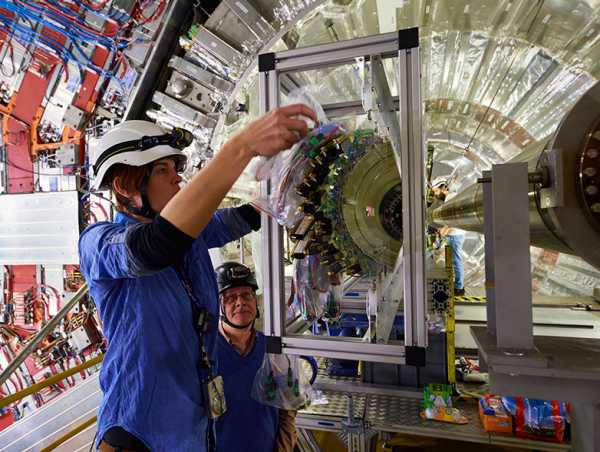
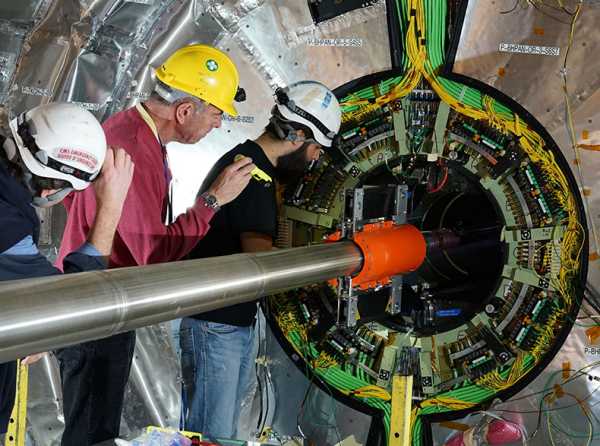
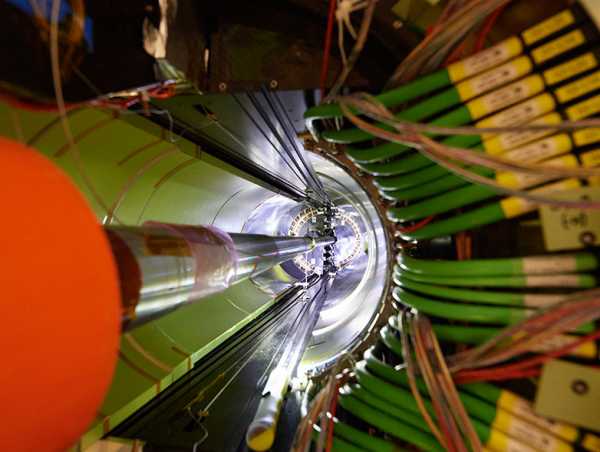
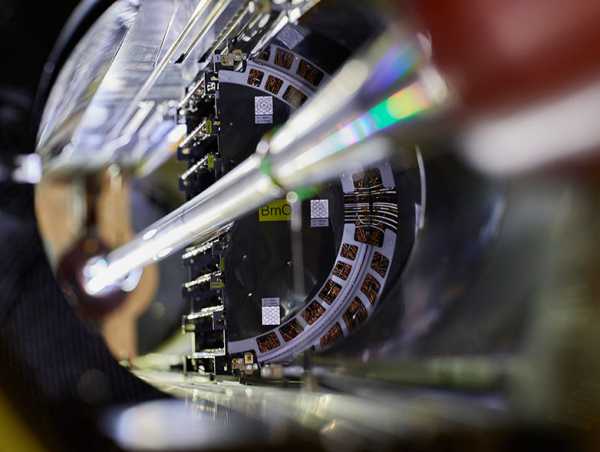
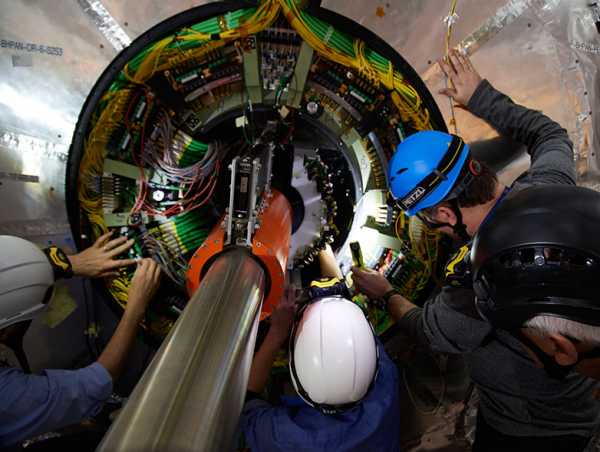
Pixel detector – like a high-speed camera
One can think of the pixel detector much like a digital camera, but with approximately 100 million pixels that can take 40 million photos every second. When particles with an electric charge go through the layers of silicon inside of the detector, they create local reversible disturbances, called electron-hole pairs. When the electrons drift inside the sensor, scientists can extract the signal, digitize the data, and determine the spatial coordinates. The data helps physicists understand how nature works at the smallest detectable distances of the space-time fabric and how fundamental particles interact with each other. Wallny indicated, “There are still many open questions in particle physics. Detectors, like CMS, open up new frontiers in physics.” He explained that, “while we know a lot about what is relevant for us here on our own scale, on the scale of the universe there are many questions that we cannot yet answer – for example we know of matter in the universe of unknown origin that we call ‘dark’ matter which is five times more abundant than the ordinary matter we know (and love). When we take the so-called ‘dark energy’ into account, as observed by the Planck and WMAP satellites, we realize that we only understand about 5% of the total mass and energy of the universe.”
Scientific collaboration a model for society?
While acknowledgements, like the Nobel prize, center around individual achievements, the future of scientific research seems to prove the value of collaboration. Collaboration not only facilitates knowledge exchange, it defrays the cost of research. Building, maintaining, and experimenting with particle accelerators can run into multi-billions of Swiss francs. The CMS experiment alone involves some 4,000 people - from scientists and engineers to technicians and administrative staff. To make research communities like CERN work, global collaboration is a necessity. The CMS experiment is just one example of how multi-national and multi-cultural communities working towards a common goal can work and live peaceably together. In fact, the CMS community is not only thriving, it is advancing society in the process.

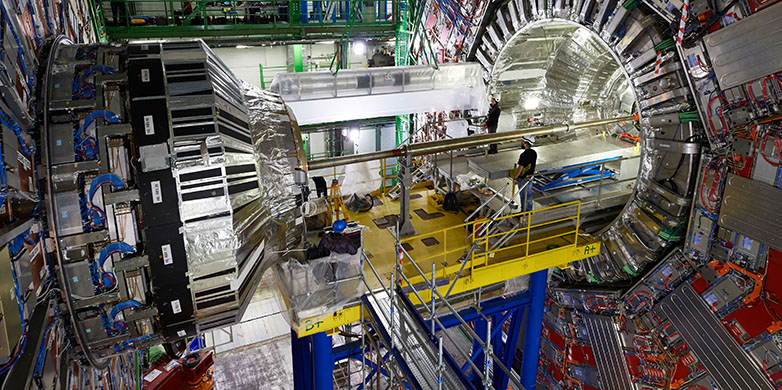
Comments
No comments yet